Journey through Drake Passage well worth a bumpy ride to reach world’s most remote and pristine continent
The Arizona Republic — January 7, 2024
DRAKE PASSAGE, South Pacific Ocean — Six down, one to go.
It was a mantra I kept reciting to myself while popping Dramamine pills as we traversed the remote and choppy waters of the Drake Passage. I was aboard the polar expedition ship World Traveller and we were sailing to Antarctica, the only one of the world’s seven continents on which I had yet to set foot.

A group of gentoo and chinstrap penguins at Port Charcot in northwestern Antarctica. Port Charcot was one of the stops on a nine-day cruise to Antarctica on the Atlas World Traveller.
As I discovered during the nine days of the voyage that took us from the southern tip of South America through the Drake Passage to the “White Continent,” a touch of seasickness was a small price to pay for the opportunity to visit the most pristine and ruggedly resplendent place I’ve ever seen.
At the same time, I proudly planted my proverbial flag in the windiest, driest, highest and – by far – coldest continent on Earth. Indeed, a trip to Antarctica is so much more rewarding than a checked box on a bucket list.
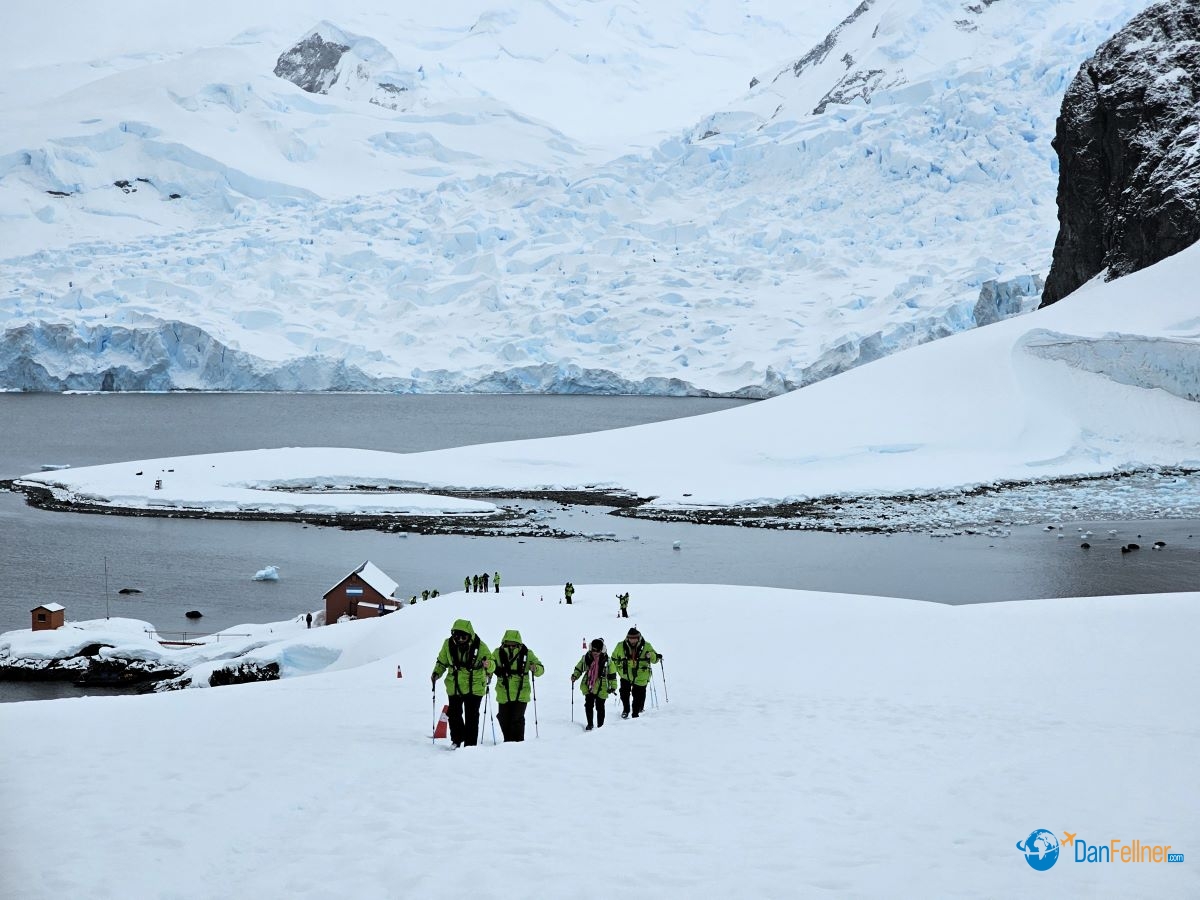
Passengers on the Atlas World Traveller hike through the snow near the Brown Station research base at Skontorp Cove in Antarctica.
And yes, it was a rare chance to cavort with thousands of gentoo and chinstrap penguins who seemingly had no fear of their human visitors.
The 198-passenger World Traveller, which took its maiden voyage in 2022, is one of three polar adventure ships in the fleet of Atlas Ocean Voyages, a Florida-based cruise line. Our sailing was 70 percent full, which meant there were about the same number of guests – 141 — as crew members. A bit more than half of my fellow passengers were Americans.
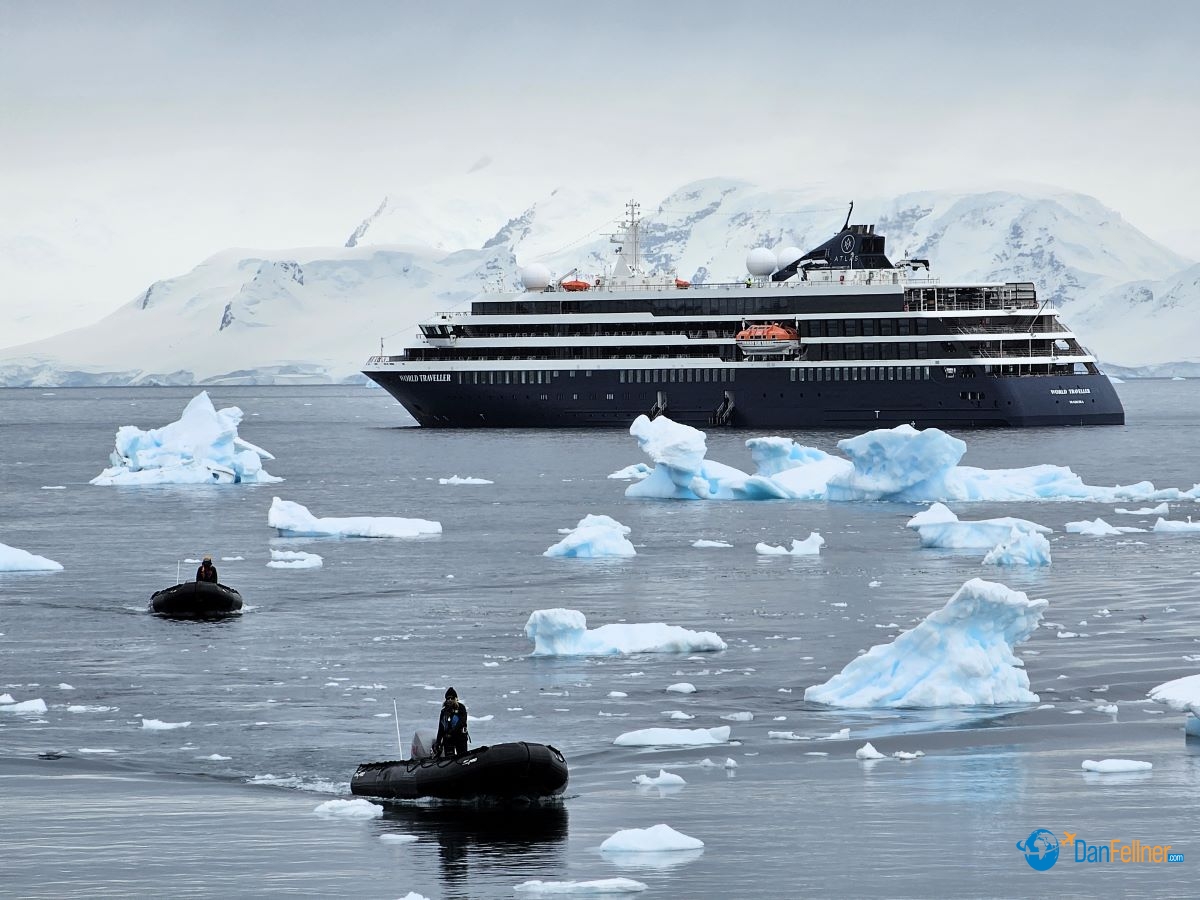
The 198-passenger Atlas World Traveller polar expedition ship anchored amidst the icebergs off the coast of Cuverville Island in northwest Antarctica.
We started the expedition in Ushuaia, Argentina, which bills itself as the world’s southernmost city. Due to heavy winds and 20-foot waves in the Drake Passage, our departure from Ushuaia was delayed 24 hours.
For travelers, flexibility on an Antarctic expedition cruise is as essential as a warm parka, hat, gloves and camera.
The Drake Passage, named after the 16th-century English explorer Francis Drake, is a 500-mile-long waterway between South America and Antarctica where the Atlantic, Pacific and Southern seas converge. It’s estimated that as many as 20,000 sailors have perished in these waters and 800 shipwrecks lie within its depths on the ocean floor.
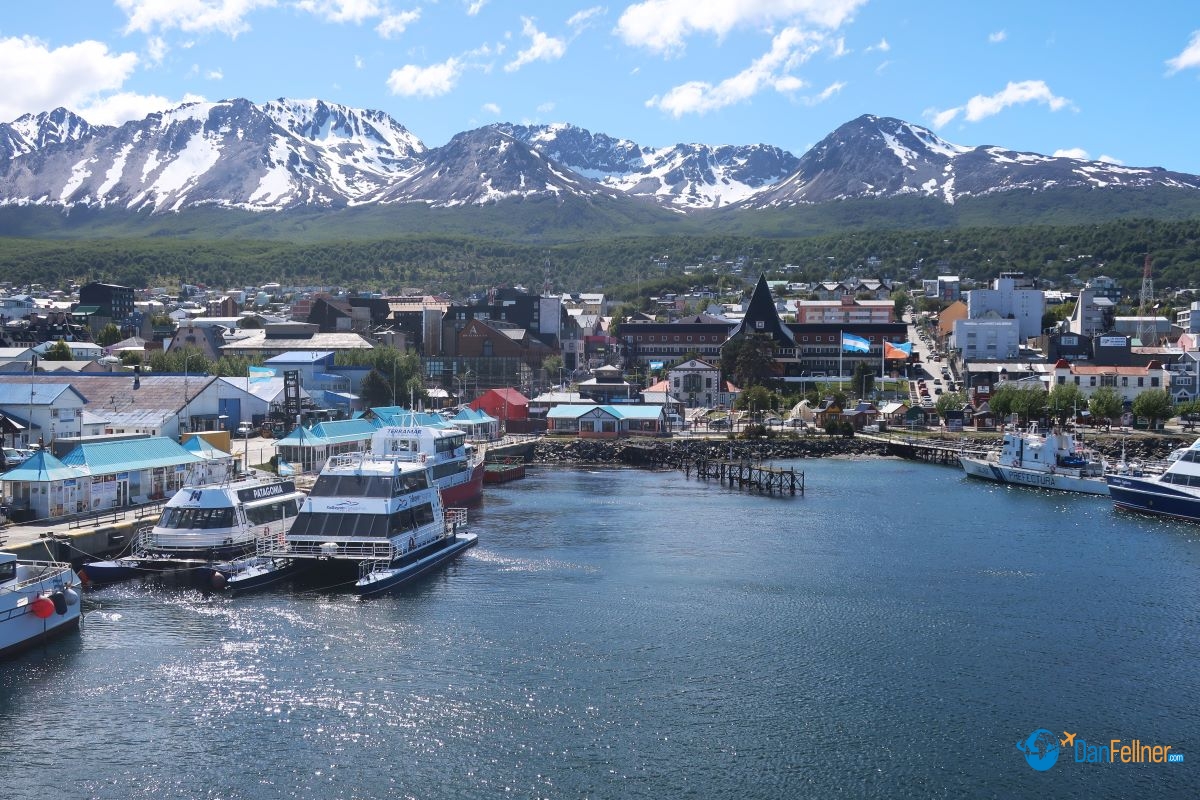
Most cruises to Antarctica begin and end in Ushuaia, Argentina. Located at the base of the Andes Mountains, Ushuaia bills itself as the southernmost city in the world.
Ocean currents here meet no resistance from any nearby landmass, producing some of the roughest seas in the world. It’s no wonder the passage has earned the moniker the “Drake Shake.”
It took 48 hours to cross the passage before we made our first landing in Antarctica at Palaver Point. Along the way, I distracted myself from a mild – yet unceasing — case of seasickness by attending onboard science lectures, photography workshops and watching endemic bird species fly outside my balcony, like the cape petrel and southern fulmar. We also spotted several humpback whales.
The ship’s 15-person expedition team was led by Katya Uryupova, a Siberia-born marine biologist who is a senior fellow at the Arctic Institute in Washington, D.C. After one of our first scheduled landings was canceled due to poor weather, Uryupova reminded us about the importance of flexibility on this kind of trip.

Katya Uryupova, a marine biologist and expedition team leader on the Atlas World Traveller, presents a lecture about Antarctica in the ship’s theater.
“It’s quite an extreme continent, so we have to be ready for all kinds of weather,” she said. “You have to test yourself, both mentally and physically.”
We spent four days in Antarctica, typically going ashore twice a day via 10-passenger inflatable boats called Zodiacs. We hiked across icy paths past abandoned research facilities and sailed through the 7-mile Lemaire Channel, known as the “Kodak Gap” for its picturesque glaciers and peaks rising more than 3,000 feet.
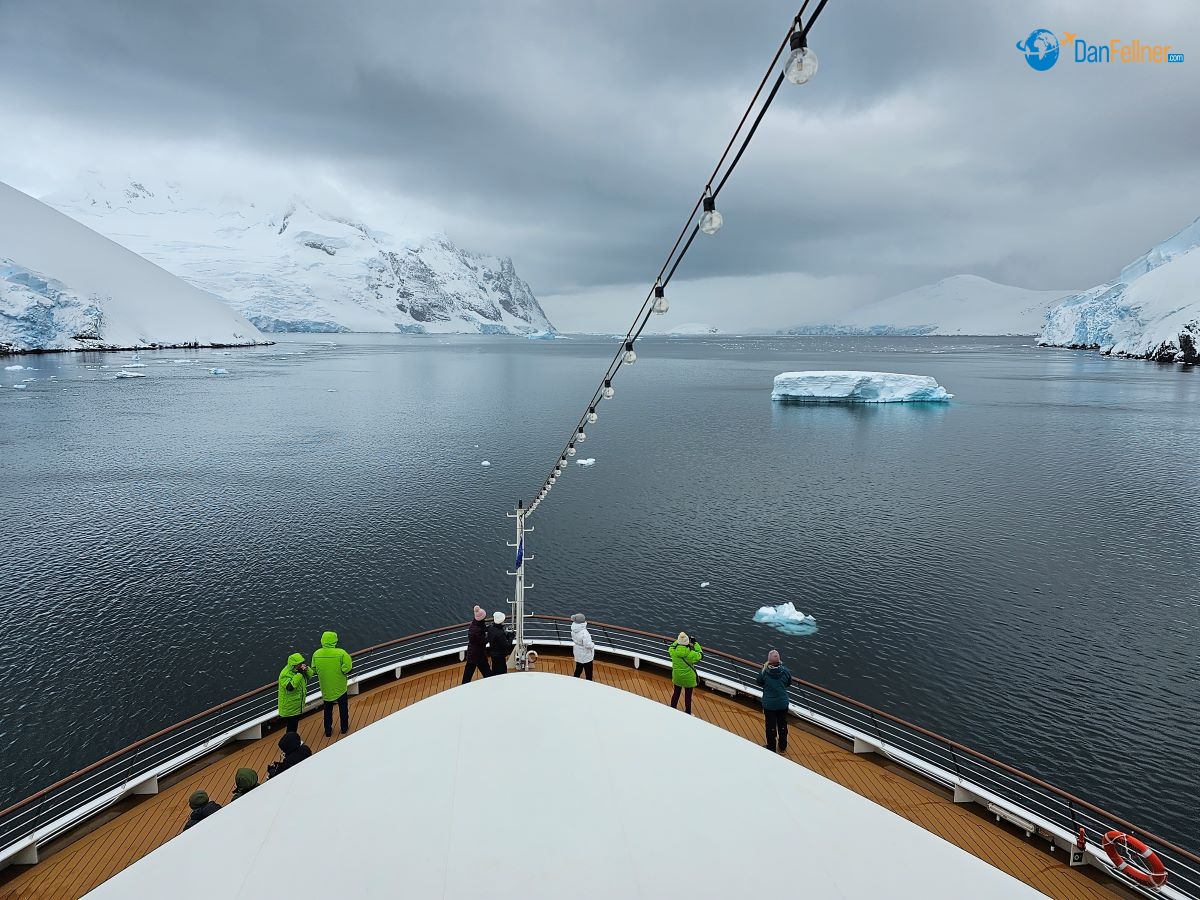
The Atlas World Traveller cruises through the Lemaire Channel in northwest Antarctica. The channel is known as the “Kodak Gap” for its picturesque scenery.
During our landings, I had to be reminded on more than one occasion by our expedition team to step away from one of the many “penguin highways,” narrow paths the penguins use to stray from their nesting sites to search for food.
In Antarctica, the penguins get the right-of-way.
Antarctica is 40 percent larger than Europe and is almost entirely covered by ice. The continent isn’t under the political domain of any one country. Rather, it’s governed by a 1959 treaty, of which more than 50 countries – including the United States — are now signatories.

A pair of gentoo penguins leaves their nesting site in search of food on Cuverville Island in northwest Antarctica.
Tourism on the continent is regulated by the International Association of Antarctica Tour Operators, which has strict rules in place to guard against overtourism and damage to the continent’s fragile ecosystem.
Only about 35,000 tourists visit the continent each year, compared to one million who cruise to Alaska. The Antarctic cruising season runs from late November through March, which coincides with the continent’s austral summer. Temperatures most days hovered around freezing, although biting winds and occasional snowfall often made it feel much colder.

A Zodiac brings passengers on the World Traveller ashore to Cuverville Island in northwest Antarctica.
While large cruise ships can sail to Antarctica, ships with more than 500 passengers aren’t allowed to make landings. That’s why most ships – like the World Traveller – carry fewer than 200 passengers. IAATO doesn’t allow more than 100 passengers to be at the same landing spot at one time.
Before making our first landing, we were required to undergo a “biosecurity” inspection. Each article of our outer layer of clothing and camera equipment was inspected by a member of the expedition team to ensure we weren’t inadvertently carrying any particles that could potentially damage wildlife. And each time we boarded a Zodiac to take us ashore, we stepped through a machine that disinfected our boots.
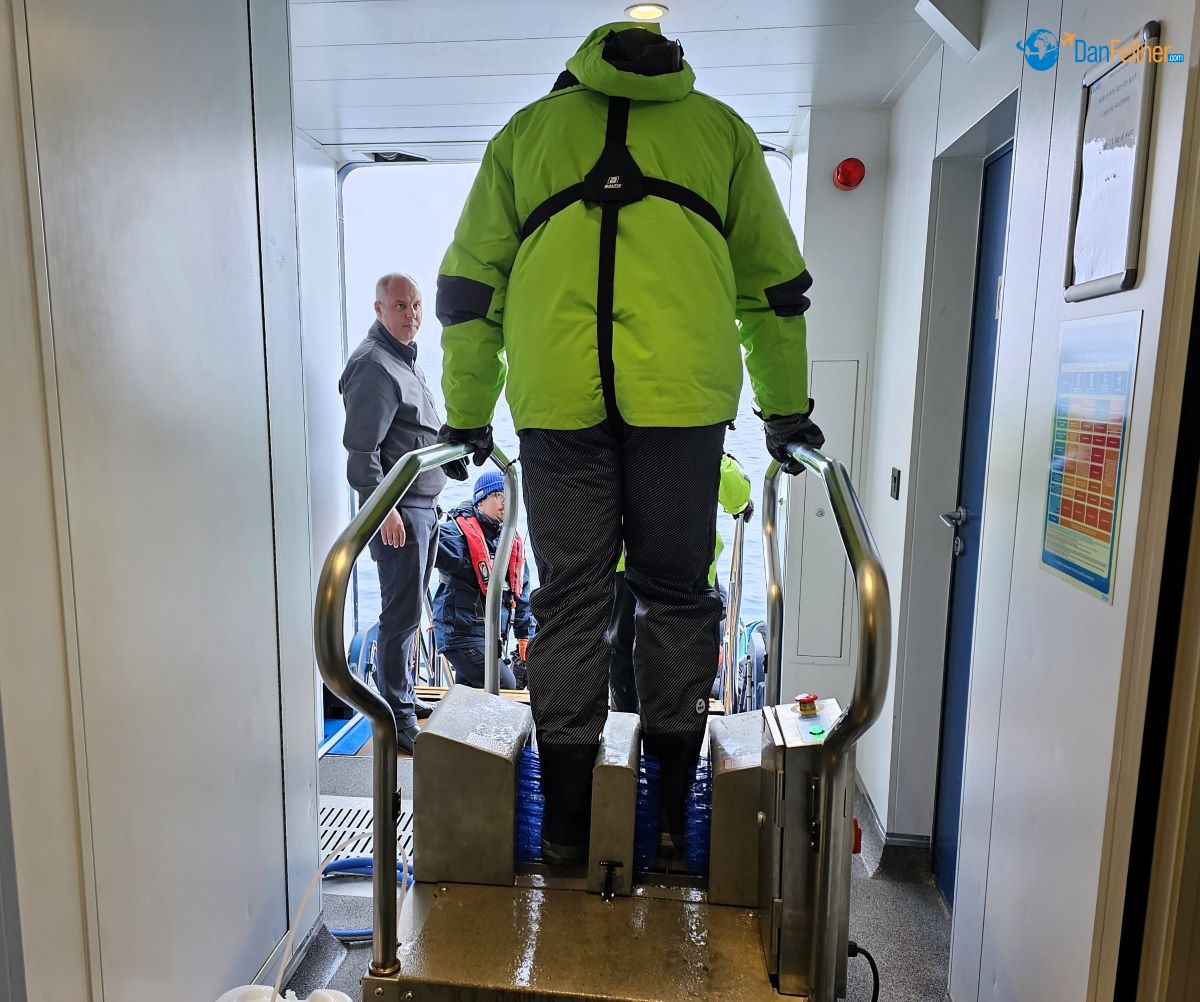
To protect the continent’s fragile ecosystem, the International Association of Antarctica Tour Operators requires cruise ship passengers to disinfect their boots each time they go ashore.
The avian flu has reached the continent this year, closing one of the most popular ports – Port Lockroy, home to the world’s southernmost post office – that’s on many Antarctic-cruise itineraries. While humans rarely catch the bird flu, it’s believed they can spread it to wildlife through their clothing and backpacks.
Most expedition cruises to Antarctica start and end in Ushuaia. Typically, visitors fly into Buenos Aires and overnight there in a hotel, before taking a three-and-a-half-hour charter flight the following morning to Ushuaia. The Buenos Aires hotel and roundtrip charter flights are usually included in the cost of the cruise, which can vary considerably depending on the cruise line and duration of the trip.
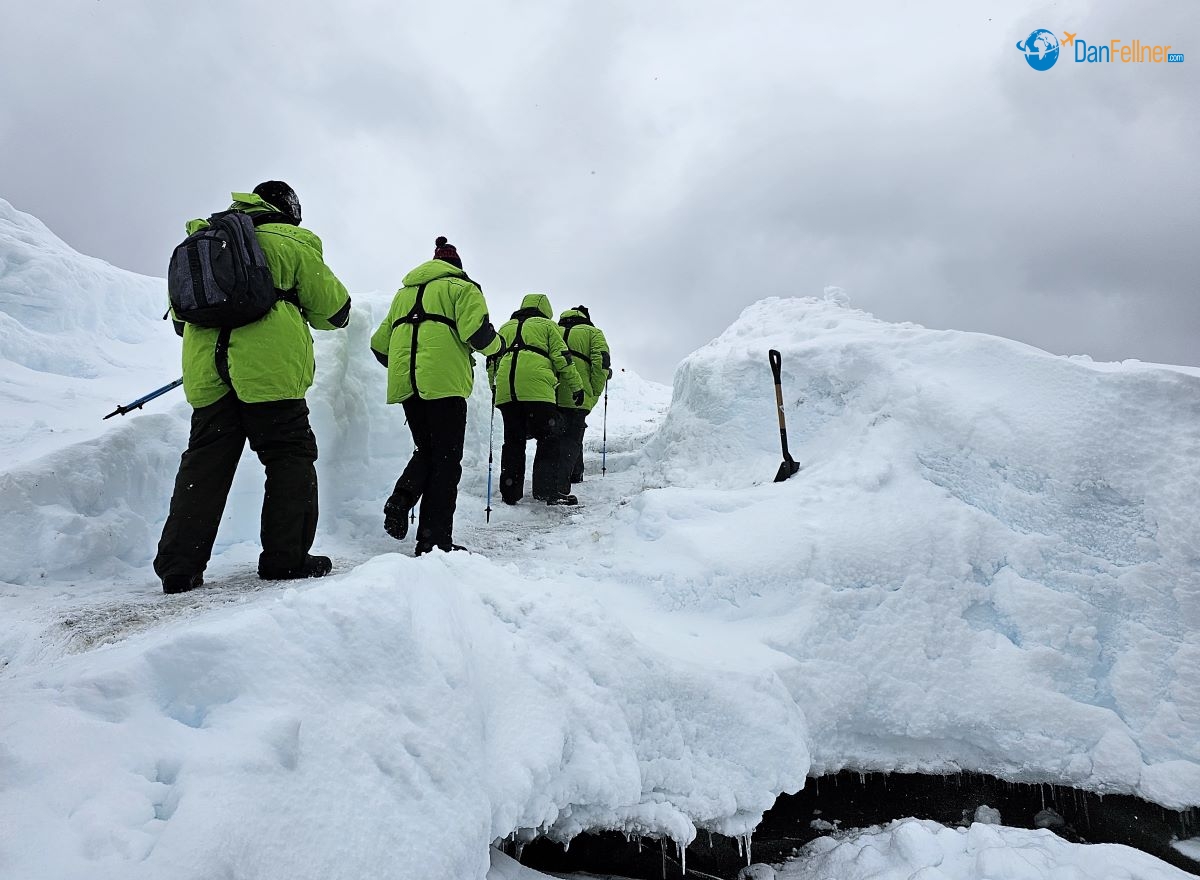
Passengers on the World Traveller hike up an icy pathway at Damoy Point in northwestern Antarctica.
For passengers especially prone to seasickness who want to avoid sailing through the Drake Passage, a growing number of cruise lines – including Atlas – are now offering a “Fly Drake” option. Passengers can fly over the Drake one or both ways from Punta Arenas, Chile, to a small airport in King George Island, about 75 miles off the coast of Antarctica, where they board the ship.
During our voyage, I met several other passengers who – like me — partly came on the trip to complete their travel collection of seven continents. The expedition team even brought a flag of Antarctica so we could pose for a photo-op on an icesheet during one of our continental landings.

The author poses for a photo-op during a landing on the Antarctic continent.
At the same time, there was a feeling of accomplishment that we had reached such a remote and hard-to-reach part of the planet. Until just 200 years ago, it’s a continent on which no human had ever set foot.
“Experienced travelers not only want to visit the continent to post a picture on social media,” said Uryupova. “But they also have a mindset like the old explorers – to visit a place where so few people on Earth have the opportunity to go.”
© 2024 Dan Fellner


